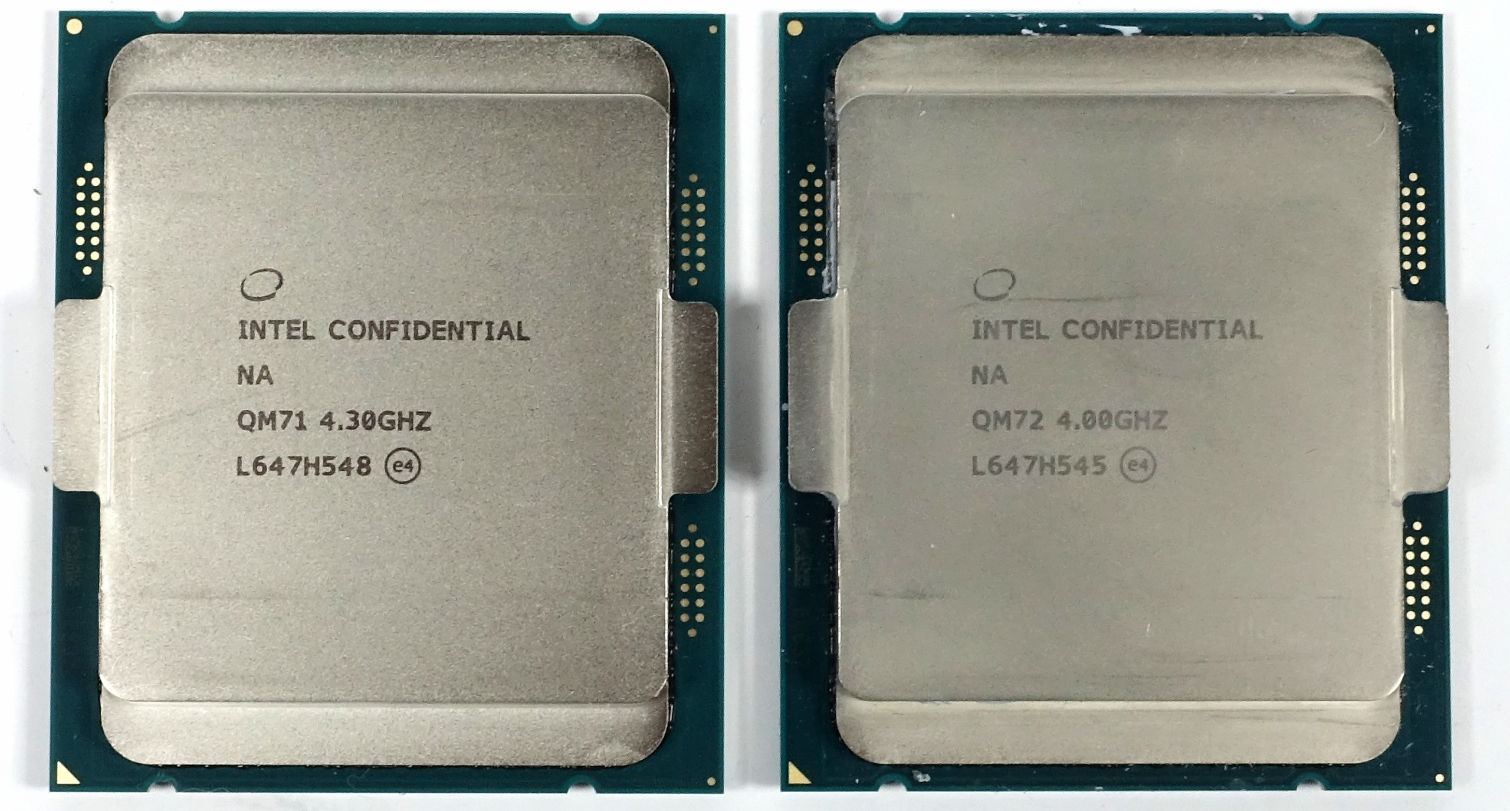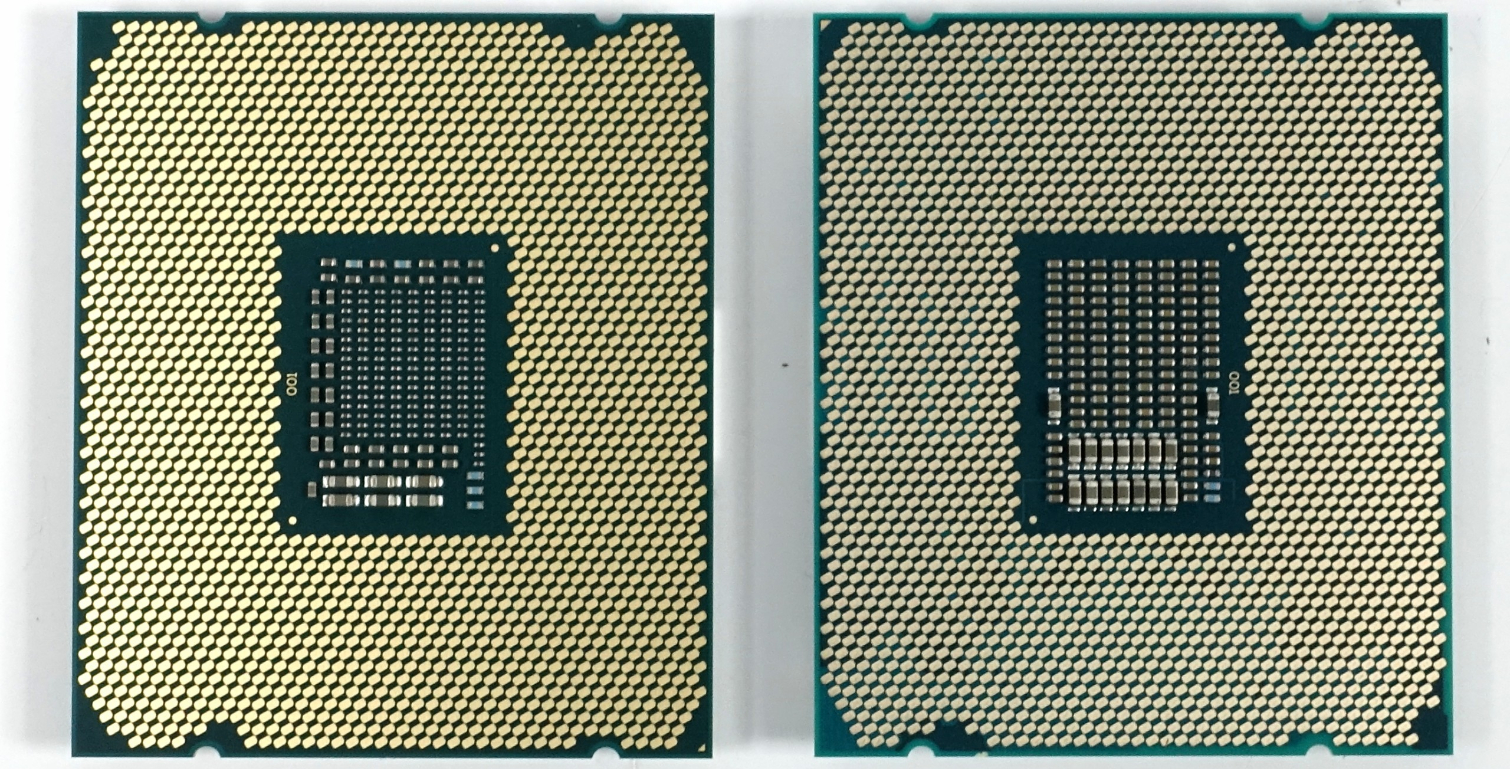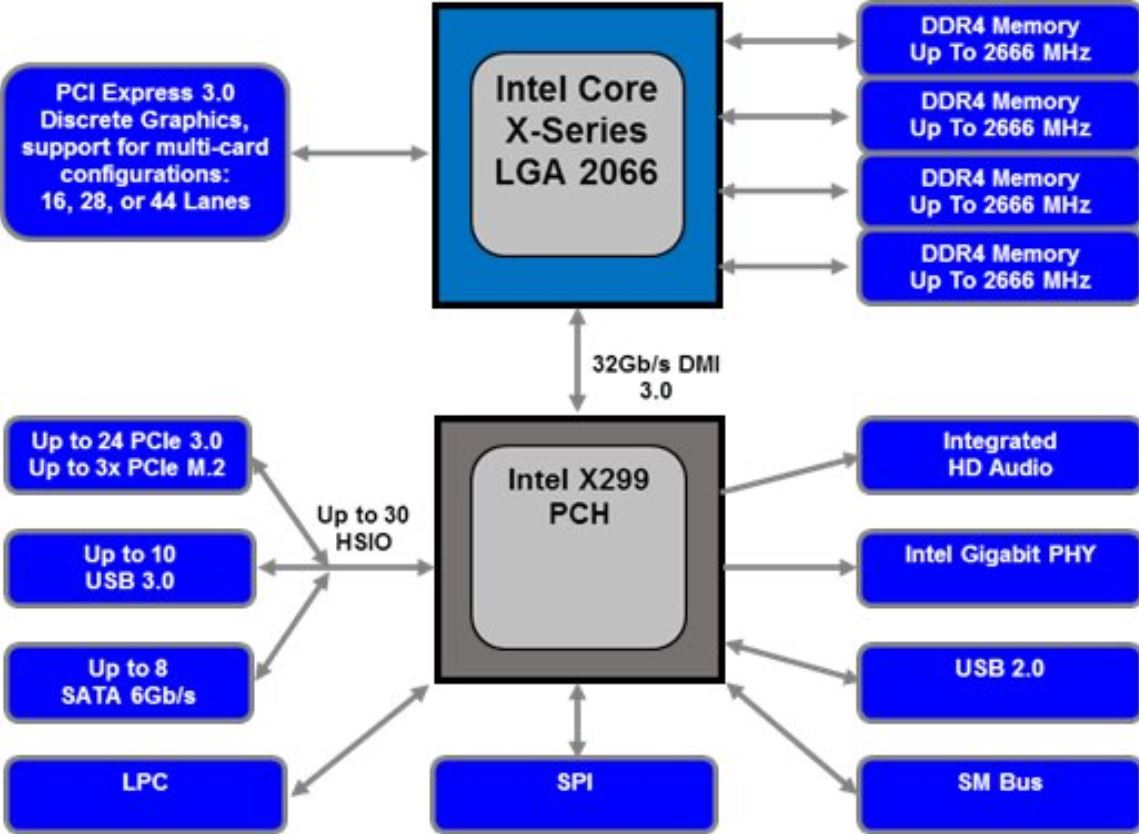Early Verdict
The Core i7-7740X brings some of the best features of the Kaby Lake microarchitecture to the HEDT platform, but you lose the integrated GPU in the process. The restricted PCIe and memory features hamstring the X299 platform, but you still pay for features you cannot use. Until Kaby Lake-X-specific motherboards come to market, it’s best to either upgrade your GPU or take the full step up to a true HEDT processor.
Pros
- +
Performance in lightly threaded applications
- +
Higher overclock ceiling
- +
Higher base memory frequency
Cons
- -
X299 chipset
- -
Disabled PCIe and memory features (X299)
- -
Price
Why you can trust Tom's Hardware
Kaby Lake Paddles Into HEDT
Last month, Intel's Skylake-X processors debuted at lower price points than we might have expected, given the company's previous high-end desktop CPU launches. The new chips also feature hefty core counts, higher Turbo Boost frequencies, a revamped implementation of Turbo Boost Max 3.0, a realigned cache hierarchy, and a new mesh topology. If you haven't read our review yet, check out Intel Core i9-7900X Review: Meet Skylake-X.
Interestingly, the seven new Skylake-X models are accompanied by two quad-core Kaby Lake-X SKUs. In the past, Intel's entire HEDT portfolio lagged at least a generation behind the mainstream offerings. But Kaby Lake-X puts Intel's most modern architecture in the LGA 2066 interface.
It's only unfortunate that this attempt at rejuvenating the high-end desktop leads to a confusing mix of features on the X299 platform, many of which Kaby Lake-X simply does not support. Fewer PCIe lanes and a dual-channel memory controller are an obvious mismatch with expensive LGA 2066-equipped motherboards, and that's bound to create a dubious value proposition.
Kaby Lake-X Becomes Core i7-7740X
There are slight differences between the familiar Core i7-7700K (Kaby Lake-S), which drops into LGA 1151, and the new Core i7-7740X (Kaby Lake-X) designed to complement the X299 chipset.
Intel increases the -7740X's base frequency by 100 MHz to 4.3 GHz, but leaves the 4.5 GHz Turbo Boost clock rate and 8MB of last-level cache unchanged. The chip's TDP does jump from 91W to 112W, but that's not from any gain in host processing resources: we're still looking at four IA cores and the GT2 configuration of Intel's graphics engine with 24 EUs.
Although the HD Graphics 630 hardware is physically present, Intel fuses it off. This eliminates many of the multimedia features that benefit the mainstream market. Perhaps they won't be as missed in the enthusiast space, though. You do lose Quick Sync, which is useful for accelerating streaming, along with HEVC encode/decode and PlayReady 3.0 "enhanced content protection" support. On the other hand, X299 enables a more robust power delivery system, so cutting out HD Graphics could prove beneficial to our overclocking efforts. After all, the disabled hardware serves as dark silicon, absorbing waste heat from the active on-die components.
Purportedly, a larger heat spreader and package add to Core i7-7740X's capacity for dissipating thermal energy. Since CPUs vary in their ability to sustain Turbo Boost clock rates depending on their thermal headroom, the -7740X might also enjoy a larger window of higher frequencies, improving performance in our benchmarks compared to Core i7-7700K. It's too bad that Kaby Lake-X uses the same thermal interface material as the mainstream models, instead of indium solder.
Get Tom's Hardware's best news and in-depth reviews, straight to your inbox.
The -7740X shares a 16-lane PCIe 3.0 controller with Intel's Core i7-7700K, and we'll dive into that liability shortly. DDR4 memory support is officially extended to 2666 MT/s, at least. That's a small improvement over the S-series’ sanctioned 2400 MT/s ceiling. The speed-up isn't related to any architectural enhancement. Rather, Intel tells us it adjusted the dual-channel controller's spec based on “significantly more test and manufacturing data” that suggested an increase was safe.
Surprisingly, the Core i7-7740X bears the same price as Core i7-7700K. So, in short, it looks like Intel took an existing CPU, tweaked a couple of knobs, and adapted it for the larger LGA 2066 interface with different packaging. The end product does overclock a little better than Core i7-7700K, we've noticed.
The Motherboard Land Of Confusion
The new X299 chipset, code-named Basin Falls, goes hand-in-hand with the LGA 2066 interface. Intel moved away from its normal tactic of recycling an enterprise-oriented platform controller hub and instead built X299 to be a beefed-up version of the Z270 chipset.
The Core i7-7740X's 16 lanes of PCIe 3.0 and two memory channels present issues, though. X299 must naturally accommodate Core i9-7900X with its 44 lanes of PCIe 3.0 and quad-channel DDR4 controller, but has to be flexible enough to take the Core i7-7740X, too. That means the lower-end CPU limits you to using four of the eight DIMM slots found on corresponding motherboards. Moreover, some PCIe or M.2 slots might not work when you drop in a -7740X.
The processor still features a DMI 3.0 link to X299, which is similar to a four-lane PCIe 3.0. The chipset supports a hefty 30 HSIO (High Speed I/O) lane allotment that vendors can carve up for expanded functionality. X99 did not support HSIO lanes, so that's a significant addition.
With Core i7-7740X, there isn't a difference between the features you can use on the X299 platform compared to what is already available from the Z270 chipset. X299-based motherboards are undoubtedly high-end parts, and they bear the price premium (~$150) to prove it. That means you're paying for features that you cannot use, which is never a positive selling point.
To reduce costs, Intel tells us that motherboard partners can build Kaby Lake-X-specific platforms with only four DIMM slots to accommodate the new processors. We haven't seen any, though, and we haven't had a single vendor tell us they're working on one.
To make matters worse, none of Skylake-X’s unique features are available from Core i7-7740X, including Turbo Boost Max 3.0, AVX-512 support, the integrated vROC (Virtual RAID on CPU) controller, or Intel's mesh/cache adjustments.
All of these factors combine to create a questionable addition to Intel's high-end desktop portfolio. The company tells us that Kaby Lake-X offers a cheaper way into X299 with an upgrade path for later. We don't think many enthusiasts are interested in paying more now for the potential to upgrade later, though. Can Intel prove us wrong?
MORE: Best CPUs
MORE: Intel & AMD Processor CPU Comparison Hierarchy
MORE: All CPUs Content

Paul Alcorn is the Editor-in-Chief for Tom's Hardware US. He also writes news and reviews on CPUs, storage, and enterprise hardware.
-
AgentLozen I'm glad that the option for Kaby Lake is available on the x299 chipset. In practice it seems impractical. This article shows you have to pay a lot more for slightly higher overclocking potential.Reply
I'm curious what Intel's plans are for next year regarding their high end desktop chips. They've already used the Kaby Lake X name for this generation. Should we expect Kaby Lake X 8900X? -
Kaz_2_ Intel high power consumption is not great in thr long run. You want the best for your investmentReply -
TJ Hooker ReplyThe curve below shows clearly that waste heat isn't dissipated quickly enough. Just as we did in our AMD Ryzen and Intel Core i9 launch articles, we used a very thin copper plate to measure the heat spreader's temperatures as well.
Why aren't there any numbers/divisions on the horizontal axis? Also, you say you did the same thing for the Ryzen reviews but I didn't see a similar graph in those articles (might just be blind though).
-
the nerd 389 How does the thermal performance of this chip compare to the 7700k? Specifically, does the larger surface area of the heat spreader give you a meaningful increase in thermal conductivity between the die and the heatsink?Reply -
rantoc Dang intel seem to be doing yet another stupid move with X299 beside rushing it out the door making the AMD's pretty brand new architecture/platform appear mature in comparison. As for this move - What's the incentive to pay premium for the X299 when getting a chip like this that won't even utilize it fully? The 7700k and platform are equal in performance in most tests and far cheaper...Reply
With the poor thermal transfer between the core and heat-spreader the retail chips won't likely even overclock well either. Never cared about the cherry picked "reviews" chips at all when it comes to overclocking as they very rarely represent the retail chips. -
rantoc What's the incentive to buy an expensive motherboard and yet get near zero of it's true potential with this cpu? That's paying for a lot of real estate that can't be used at all and on top of that the same poor thermal transfer between the core and heat-spreader meaning a good stable oc is harder to obtain and far less likely to happen on the retail IE non-review cherry picked ones.Reply
I think intel shoot themselves in the foot by scaling this one down to much and then couple it with an overpriced platform for what you get out of it, x299 will be good no doubt but only with the right chips and only when the rushed out of door bugs been fixed. -
This is awesome setup because you can buy x299 motherboard for $219 dollars already which gives you amazing room for later upgrade and this CPU can run 5.0Ghz easily producing very little heat. People at Toms Hardware completely missed the point. I'd rather get $219 x299 motherboard than outdated Z270 for $160.Reply


